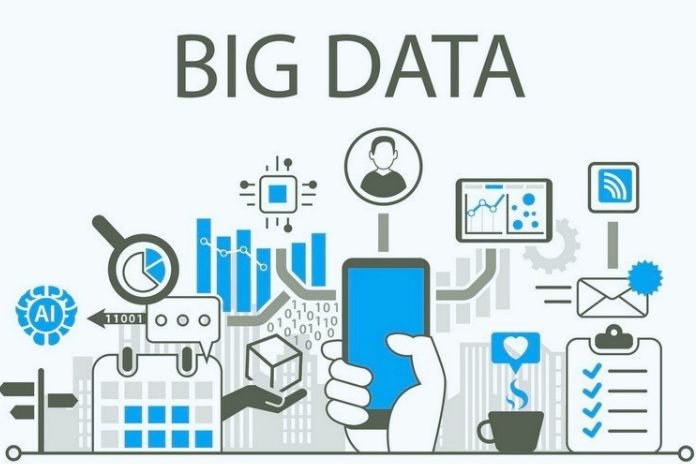What Is Big Data? A definition
Collecting and analyzing data is not in itself new. It is something that has always been done substantially, often unconsciously. In the concept of Big Data, as the etymology of the term suggests, what makes the difference is precisely the magnitude of the phenomenon, which makes a manual approach completely unlikely and the use of techniques based on mathematical-statistical disciplines entirely desirable. With the computational support of information technology. Before going into the merits of the genesis of Big Data, it is interesting to mention some definitions that still constitute an objective point of reference for framing the meaning of a technology that only makes sense when it is applied.
Why Is Big Data Important?
In the current information society, billions of people interact with an interconnected device capable of acquiring and storing an exponentially growing amount of data every day. According to many strategic directions, these data emerge decisive behavioral aspects for companies. For a company, data analysis allows you to find helpful information and answers to reduce time and overhead costs, develop new products, optimize existing offers according to the needs of the target and, in general, obtain decision-making support whatever the process—interested in the interaction between the brand and its target audience.
Today we find many applications capable of making Big Data very precious allies to implement a continuous improvement strategy for companies that decide to invest in their analysis. Now let’s see which main business areas still enjoy the possible advantages thanks to a conscious Big Data Analytics strategy and, more generally, from a truly data-driven approach to their core activities.
How Big Data Is Used (Big Data Analytics)
When a company embarks on a digital transformation path with a data-driven approach implemented consciously, it can obtain a wide variety of benefits, adding real value to its processes, including:
- Reduce the costs of operations;
- Reduce the time to market new products and services;
- Increase customer engagement;
- Retain and make customers more profitable;
- Identify unique needs and business plans to conquer them;
- Increase your sales
Very good. Data-driven logic, described famously, is now something within reach of a child still lacking in technological knowledge. But how is it possible to put all this into practice starting from the available data? The management of Big Data is reflected in a series of methodologies, often used simultaneously to achieve specific objectives. It is a set of methods and techniques inspired by data science and artificial intelligence. It can analyze enormous complexity to make it simple and usable to support decisions and concrete operations. Thanks to these techniques, it is possible to benefit enormously from both structured and unstructured data analysis.
Also Read: How Big Data Analytics Strengthens Cybersecurity
The Principal Methodologies And Advanced Analytics
Specifically, there are technologies capable of managing unstructured data to process them in real-time, analyzing them with various methods, more or less innovative. The common denominator of the analysis methodologies is the ability to extract information starting from a dataset independently. When it comes to data ingestion, there are many etl vs elt pros and cons that you need to take into consideration before choosing one method permanently. The four classics of Analytics used in data analysis are as follows:
Descriptive Analysis
It consists of the tools that make it possible to represent and describe the reality of a scenario or a process functional to the business. This happens through tools that facilitate the understanding of a vast volume of data, for example, graphs, diagrams and interactive visual tools capable of expressing a synthesis of the original complexity at various levels;
Diagnostic Analysis
It uses correlation and data discovery techniques to trace the causes of a specific event. The diagnostic comment is helpful to better understand the nature of certain phenomena, even before intervening at the decisional level. Also, in this case, we make use as much as possible of data visualization tools able to synthesize the complexity of the information extracted from the data.
Predictive Analysis
It Is based on predictive models, it translates into solutions capable of carrying out a data analysis helpful in generating insights capable of designing future scenarios based on information history. It is the preferred field of action for data mining and machine learning. The artificial intelligence technique aims to analyze a specific problem by analyzing historical data acquired in a given scenario to make predictions referring to the same context.
Developing a machine learning model is equivalent to real art, as it involves mathematical and IT knowledge and has a marked sensitivity towards the reference scenario, which is essential to guarantee the reliability of the model in the long term. The system’s variables are, in fact, constantly changing, and analyzing data referring to an inconsistent scenario would inevitably produce unreliable predictive evaluations.
Prescriptive Analysis
It consists of the evolution of predictive analysis, to which a further level of analytical ambition is added. Optimization models are implemented, which can form hypotheses relating to future scenarios, both to support the operators’ decisions and to automate the proposed actions according to the analyses carried out. The latter case is otherwise referred to as automated analytics or automatic analysis.
Based on the four Big Data analysis methodologies, it is possible to derive other approaches capable of combining the effects according to the objectives to be achieved. This is the case of Advanced Analytics, which includes the techniques of predictive, prescriptive and automatic analysis to carry out advanced level analyses to optimize the aspects of speed and complexity that increasingly often derives from incredibly varied and multidisciplinary sources of information.
Also Read: The Biggest Challenges Around Big Data

